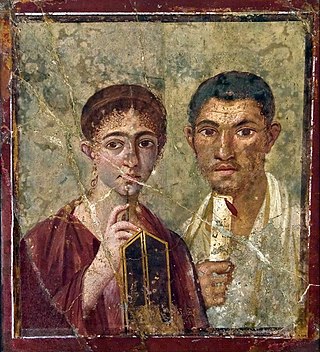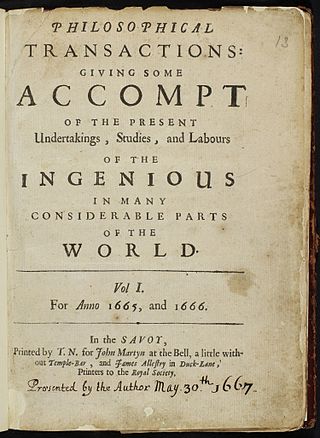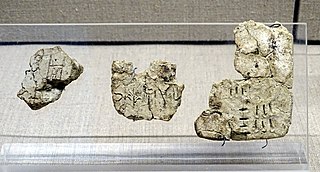
An encyclopedia or encyclopaedia is a reference work or compendium providing summaries of knowledge, either general or special, in a particular field or discipline. Encyclopedias are divided into articles or entries that are arranged alphabetically by article name or by thematic categories, or else are hyperlinked and searchable. Encyclopedia entries are longer and more detailed than those in most dictionaries. Generally speaking, encyclopedia articles focus on factual information concerning the subject named in the article's title; this is unlike dictionary entries, which focus on linguistic information about words, such as their etymology, meaning, pronunciation, use, and grammatical forms.
The following outline is provided as an overview of and topical guide to education:

A citation is a reference to a source. More precisely, a citation is an abbreviated alphanumeric expression embedded in the body of an intellectual work that denotes an entry in the bibliographic references section of the work for the purpose of acknowledging the relevance of the works of others to the topic of discussion at the spot where the citation appears.

Scientific citation is providing detailed reference in a scientific publication, typically a paper or book, to previous published communications which have a bearing on the subject of the new publication. The purpose of citations in original work is to allow readers of the paper to refer to cited work to assist them in judging the new work, source background information vital for future development, and acknowledge the contributions of earlier workers. Citations in, say, a review paper bring together many sources, often recent, in one place.

In the study of history as an academic discipline, a primary source is an artifact, document, diary, manuscript, autobiography, recording, or any other source of information that was created at the time under study. It serves as an original source of information about the topic. Similar definitions can be used in library science and other areas of scholarship, although different fields have somewhat different definitions.

Bibliography, as a discipline, is traditionally the academic study of books as physical, cultural objects; in this sense, it is also known as bibliology. English author and bibliographer John Carter describes bibliography as a word having two senses: one, a list of books for further study or of works consulted by an author ; the other one, applicable for collectors, is "the study of books as physical objects" and "the systematic description of books as objects".

This page is a glossary of library and information science.

Scientific literature encompasses a vast body of academic papers that spans various disciplines within the natural and social sciences. It primarily consists of academic papers that present original empirical research and theoretical contributions. These papers serve as essential sources of knowledge and are commonly referred to simply as “the literature” within specific research fields.

An academic institution is an educational institution dedicated to education and research, which grants academic degrees. See also academy and university.
Source criticism is the process of evaluating an information source, i.e.: a document, a person, a speech, a fingerprint, a photo, an observation, or anything used in order to obtain knowledge. In relation to a given purpose, a given information source may be more or less valid, reliable or relevant. Broadly, "source criticism" is the interdisciplinary study of how information sources are evaluated for given tasks.

The following outline is provided as an overview of and topical guide to library and information science:

Nature Materials is a monthly peer-reviewed scientific journal published by Nature Portfolio. It was launched in September 2002. Vincent Dusastre is the launching and current chief editor.
A source text is a text from which information or ideas are derived. In translation, a source text is the original text that is to be translated into another language.

Recorded history or written history describes the historical events that have been recorded in a written form or other documented communication which are subsequently evaluated by historians using the historical method. For broader world history, recorded history begins with the accounts of the ancient world around the 4th millennium BC, and it coincides with the invention of writing.

A review article is an article that summarizes the current state of understanding on a topic within a certain discipline. A review article is generally considered a secondary source since it may analyze and discuss the method and conclusions in previously published studies. It resembles a survey article or, in news publishing, overview article, which also surveys and summarizes previously published primary and secondary sources, instead of reporting new facts and results. Survey articles are however considered tertiary sources, since they do not provide additional analysis and synthesis of new conclusions. A review of such sources is often referred to as a tertiary review.
The UNISIST model of information dissemination was proposed in 1971 by the United Nations. UNISIST is a model of the social system of communication, which consists of knowledge producers, intermediaries, and users. These groups of people are different kinds of professionals. The social system also contains institutes such as research institutes, publishers, and libraries. The actors and institutions perform information services such as writing, publishing, storing and retrieving documents and information. The actors are communicating in both formal and informal ways and they are producing different kinds of documents such as journal articles, books, book reviews, proceedings, bibliographies and catalogues, dictionaries, handbooks, encyclopedias and review articles.
Source literature is a kind of information source. It might, for example, be cited and used as sources in academic writings, and then called the literature on the subject.

In scholarship, a secondary source is a document or recording that relates or discusses information originally presented elsewhere. A secondary source contrasts with a primary, or original, source of the information being discussed. A primary source can be a person with direct knowledge of a situation or it may be a document created by such a person.
A pathfinder is a bibliography created to help begin research in a particular topic or subject area. Pathfinders are also called subject guides, topic guides, research guides, libguides, information portals, resource lists or study guides. Pathfinders produced by the Library of Congress are known as "tracer bullets". What is special about a pathfinder is that it only refers to the information in a specific location, i.e. the shelves of a local library.
Historical sources encompass "every kind of evidence that human beings have left of their past activities — the written word and spoken word, the shape of the landscape and the material artefact, the fine arts as well as photography and film."










